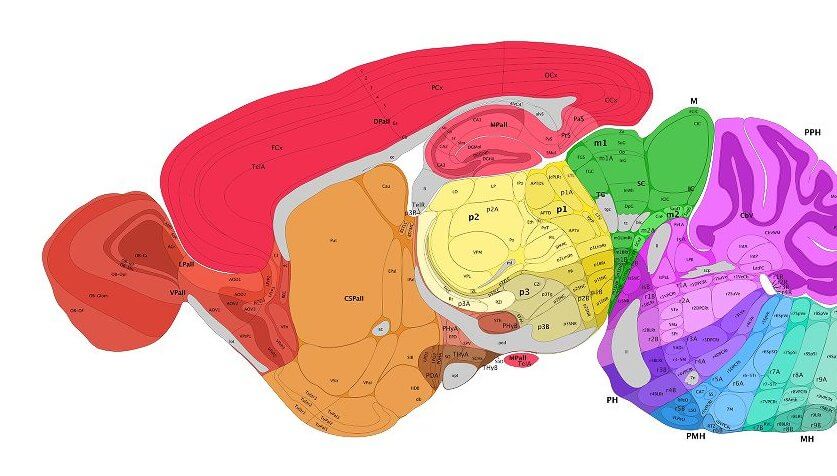

Notwithstanding their obvious shortcomings, animal models may overcome some limitations of human studies. In addition, there is some variability among MRI postnatal studies, which may be influenced by variations in the case definition used and the postnatal morbidity associated with IUGR. The acquisition of high resolution MRI images is limited in fetuses and neonates due to size and motion artefact issues. In spite of previous studies the timing and pattern of brain abnormalities associated with IUGR is still ill-defined. There is a need to improve MRI characterization of the anatomical patterns of brain reorganization associated with IUGR and to develop specific imaging biomarkers. The development of imaging biomarkers for early diagnosis and monitoring of brain changes associated with IUGR is among the challenges to improve management and outcomes of these children. Decreased volume in gray matter (GM) and hippocampus, and major delays in cortical development have been reported in neonates, as well as reduced GM volumes and decreased fractal dimension of both GM and white matter (WM) in infants. Additionally, magnetic resonance imaging (MRI) studies have consistently demonstrated brain structural changes on IUGR –. The association between IUGR and short-, and long-term, – neurodevelopmental and cognitive dysfunctions has been extensively described. Reduction of placental blood flow results in chronic exposure to hypoxemia and undernutrition and this has consequences on the developing brain. Intrauterine growth restriction (IUGR) due to placental insufficiency affects 5–10% of all pregnancies and induces cognitive disorders in a substantial proportion of children. The funders had no role in study design, data collection and analysis, decision to publish, or preparation of the manuscript.Ĭompeting interests: The authors have declared that no competing interests exist. This is an open-access article distributed under the terms of the Creative Commons Attribution License, which permits unrestricted use, distribution, and reproduction in any medium, provided the original author and source are credited.įunding: This work was supported by Fondo the Investigación Sanitaria (PI/060347) (Spain), Obra Social La Caixa (Barcelona, Spain) Rio Hortega grant from Carlos III Institute of Health (Spain) and Emili Letang fellowship by Hospital Clinic (Barcelona, Spain). Received: SeptemAccepted: JanuPublished: February 8, 2012Ĭopyright: © 2012 Eixarch et al. PLoS ONE 7(2):Įditor: Olivier Baud, Hôpital Robert Debré, France (2012) Neonatal Neurobehavior and Diffusion MRI Changes in Brain Reorganization Due to Intrauterine Growth Restriction in a Rabbit Model. Regional FA changes were correlated with poorer outcome in neurobehavioral tests.Ĭitation: Eixarch E, Batalle D, Illa M, Muñoz-Moreno E, Arbat-Plana A, Amat-Roldan I, et al. Voxel based analysis revealed fractional anisotropy (FA) differences in multiple brain regions of gray and white matter, including frontal, insular, occipital and temporal cortex, hippocampus, putamen, thalamus, claustrum, medial septal nucleus, anterior commissure, internal capsule, fimbria of hippocampus, medial lemniscus and olfactory tract. IUGR was associated with significantly poorer neurobehavioral performance in most domains. Global and regional (manual delineation and voxel based analysis) diffusion tensor imaging parameters were analyzed. Subsequently, brains were collected and fixed and MRI was performed using a high resolution acquisition scheme. At postnatal day +1, neonates were assessed by validated neurobehavioral tests including evaluation of tone, spontaneous locomotion, reflex motor activity, motor responses to olfactory stimuli, and coordination of suck and swallow. Cesarean section was performed at 30 days (term 31 days).

Ten contralateral horn fetuses were used as controls. IUGR was induced in 10 New Zealand fetal rabbits by ligation of 40–50% of uteroplacental vessels in one horn at 25 days of gestation.


 0 kommentar(er)
0 kommentar(er)
